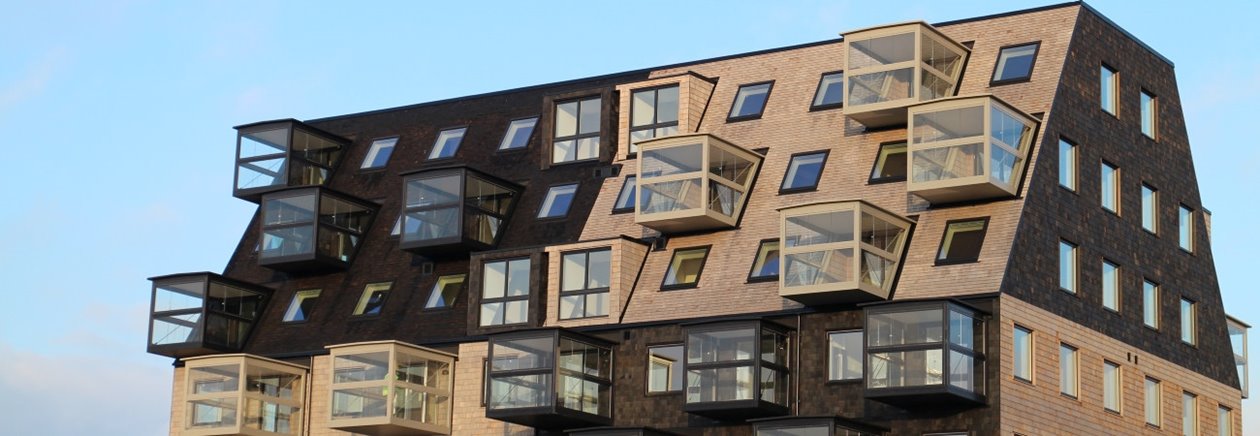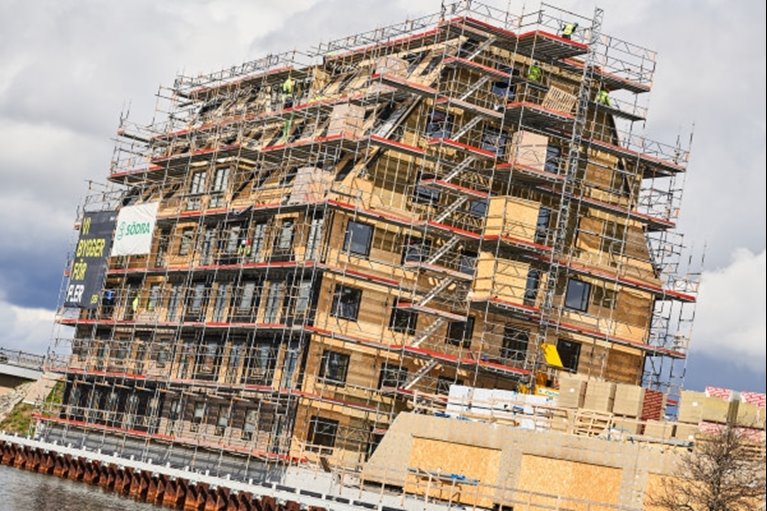Seven facts in survey show Swedes want more wood

More public buildings and housing in timber – even though they cost more. That’s what a lot of Swedes want to see, and a national strategy to increase timber construction in Sweden is now being requested, according to a Novus survey from Södra.

A snapshot from the survey reveals seven reasons why Swedes seek more timber in their lives:
- Seven out of ten (71 percent) think that Sweden should continue to invest in more climate-smart materials for construction, even in an economic recession.
- Nearly two out of three (64 percent) think their municipality should build climate-smart buildings.
- Nearly two out of three (64 percent) would like to see their municipality use more climate-smart materials for construction in the future.
- Half (50 percent) would like to see a national strategy to increase timber construction for new housing in Sweden.
- One in two Swedes (49 percent) would prefer their next home to be built mainly with timber.
- Seven out of ten (69 percent) would like the timber material to be visible in the building’s construction.
- Four out of ten (39 percent) have heard about cross-laminated timber (CLT).
Sweden needs more climate-smart buildings to address both the housing shortage and the climate transition. At the same time, the economic recession could put a damper on housing construction in the coming years, according to the Swedish Board of Housing Building and Planning (Boverket). This would have a negative impact on sustainable construction – in contrast to what Swedes want.
The new Novus survey from Södra shows that Swedes want to see more climate-smart timber construction. Nearly two out of three Swedes (64 percent) think their municipality should build climate-smart buildings, such as health centres and schools. More than seven out of ten (71 percent) also think that Sweden should continue to invest in more climate-smart materials for construction, even in an economic recession.
“Timber construction is an excellent way to added value to the forest raw material from family forestry and to continue the green transition. Timber can store carbon for a long time, and help to phase out building materials with a heavy carbon footprint. With our cross-laminated timber (CLT) process, we, and the 51,000 members of Södra, can make a contribution by enabling the construction industry and municipalities across the country to continue building high and climate-smart,” said Lotta Lyrå, President of Södra.
Södra’s survey shows: National strategy on the agenda
Södra’s ambition to promote more climate-smart construction also resonates with the general public. Nearly one in two Swedes (49 percent) would prefer their next home to be built mainly with timber, and equally as many (49 percent) would like the government to launch a national policy to increase timber construction in Sweden. Denmark has already adopted a sustainable construction strategy that promotes timber construction and puts a cap on CO₂ emissions, and will apply to all new construction from 2025 and onwards.
“We have to keep the green transition moving and Denmark is showing how that can be done. Sweden has the technology that’s required, but now we need clear political guidance. That would send strong signals to both the business sector and the construction industry and provide a real boost for climate-smart construction,” said Andreas Berge, head of segment for Södra Building Systems and the person responsible for Södra’s timber building systems.
Södra’s CLT can reduce emissions by 80 percent
Cross-laminated timber (CLT) is a sustainable alternative to traditional building materials and has rapidly emerged as a substitute and complement to steel and concrete. CLT is made from board lamellas, which are finger-jointed lengthwise and then stacked crosswise in layers. The layers are bonded and then pressed together to form strong and robust panels. The material can be used to construct high-rise buildings, industrial halls and schools in timber, and Södra’s CLT can reduce their carbon footprint by up to 80 percent.
Södra has just inaugurated a new CLT facility at Värö with the capacity to supply framing materials for 4,000 homes per year.
Show all content for topic
Subjects:
